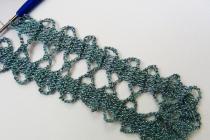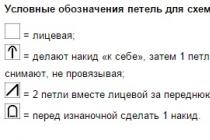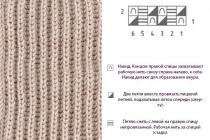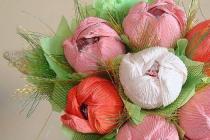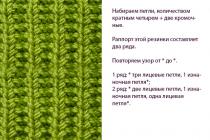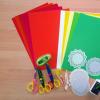Очень хочется написать о том, почему устная часть ЕГЭ не отражает реальных разговорных навыков ученика, но сдержусь. Вместо этого обсудим более актуальные вопросы – из чего состоит говорение на Едином государственном экзамене и как его победить.
Устная часть Единого государственного экзамена состоит из 4-х заданий :
На все это отводится 15 минут . За правильное выполнение всех заданий можно получить 20 баллов .
Особенностью этой части экзамена является то, что он сдается на компьютере . Вы приходите в специально оборудованный класс и получаете диск с программой. Запускаете программу на компьютере, надеваете гарнитуру и следуете указаниям на экране. Посмотреть, как это будет выглядеть на экзамене, можно в онлайн тренажерах или . На дисплее вы будете видеть таймер, который поможет самостоятельно отслеживать время ответа.
Если с программой возникают какие-то сложности, вам поможет ассистент, который присутствует в классе. После записи каждого задания ученик сможет прослушать себя. Обратите внимание, что если ответ не записался, или записался с сильными помехами, нужно обязательно сказать об этом ассистенту! Если вы этого не сделаете, неправильно записанный ответ уйдет на оценку эксперту.
Чтение текстаЗадание 1 устной части экзамена представляет собой чтение текста научно-популярной тематики. Легенда гласит, что вы готовитесь к докладу на иностранном языке и репетируете его перед другом.
На подготовку к заданию дают 1.5 минуты, и на чтение текста также отводится 1.5 минуты. Текст небольшой, так что вполне реально уложиться в это время.
Вот пример такого задания:
Критерии оцениванияЗа задание можно получить всего 1 балл , если “речь воспринимается легко: необоснованные паузы отсутствуют; фразовое ударение и интонационные контуры, произношение слов без нарушений нормы. Допускается не более пяти фонетических ошибок, в том числе одна-две ошибки, искажающие смысл”.
Ошибкой, искажающей смысл, считается:
К простым фонетическим ошибкам относят:
На самом деле, получить за первое задание максимум – 1 балл – не представляет труда.
Как я тренирую чтение вслух с учениками:
Потом задаю на дом этот же алгоритм и слушаю ученика на уроке. Ниже пример разобранного таким макаром текста:
Про правила чтения, которым я уделяю внимание при подготовке, я уже писала в , и . Это статьи про ОГЭ, первое задание в обоих экзаменах очень похоже. Также по ссылкам вы найдете упражнения на изученные звуки.
- Тренируйтесь дома с диктофоном, прослушивайте себя и отмечайте ошибки. Так как на экзамене вы столкнетесь с шумовыми помехами в лице других студентов, которые начнут говорить вместе с вами и будут вас раздражать, советую еще при тренировке включать телевизор или радио для имитации этого самого раздражителя.
- Если вы не знаете, как читается слово (например, shallow) – вспоминайте, как читаются похожие слова (narrow) и читайте по аналогии. При подготовке настойчиво рекомендую произношение всех трудных слов сверять со словарем
- Делайте паузы на знаках препинания и выделяйте интонацией самостоятельные части речи
- Не торопитесь! 90 секунд вполне достаточно, чтобы в спокойном темпе прочитать весь текст
- Если вы поняли, что прочитали какое-то слово неправильно – перечитайте его правильно. Засчитан будет только последний вариант прочтения слова.
- Перед устной частью экзамена с утречка проговорите один вариант дома
Для подготовки к этой части экзамена я, как всегда, рекомендую задания с сайта ФИПИ , а также следующие книги:
Вариант № 466995
При выполнении заданий с кратким ответом впишите в поле для ответа цифру, которая соответствует номеру правильного ответа, или число, слово, последовательность букв (слов) или цифр. Ответ следует записывать без пробелов и каких-либо дополнительных символов. Для выполнения заданий 1, 2 прослушайте аудиозапись и выпишите правильную последовательность цифр. Для выполнения заданий 3-9 прослушайте интервью и выберите один из трех вариантов ответа. В задании 10 установите соответствие между текстами A-G и заголовками 1-8. В задании один заголовок лишний. В задании 11 прочитайте текст и заполните пропуски A-F частями предложений, обозначенными цифрами 1-7. Одна из частей в списке 1-7 лишняя. Прочитайте текст и выполните задания 12-18. В каждом задании запишите в поле ответа цифру 1, 2, 3 или 4, соответствующую выбранному Вами варианту ответа.
При выполнении заданий 19-25, преобразуйте, если необходимо, слова, напечатанные заглавными буквами так, чтобы они грамматически соответствовали содержанию текстов. Записывайте ответы без пробелов, запятых и других дополнительных символов; не копируйте слова-ответы из браузера, вписывайте их, набирая с клавиатуры. При выполнении заданий 26-31, образуйте от слов, напечатанных заглавными буквами однокоренные слова так, чтобы они грамматически и лексически соответствовали содержанию текста. Записывайте ответы без пробелов, запятых и других дополнительных символов; не копируйте слова-ответы из браузера, вписывайте их, набирая с клавиатуры. Прочитайте текст с пропусками, обозначенными номерами 32-38. Запишите в поле ответа цифру 1, 2, 3 или 4, соответствующую выбранному Вами варианту ответа.
Если вариант задан учителем, вы можете вписать или загрузить в систему ответы к заданиям с развернутым ответом. Учитель увидит результаты выполнения заданий с кратким ответом и сможет оценить загруженные ответы к заданиям с развернутым ответом. Выставленные учителем баллы отобразятся в вашей статистике.
Версия для печати и копирования в MS Word
Вы услышите 6 высказываний. Установите соответствие между высказываниями каждого говорящего A-F и утверждениями, данными в списке 1-7. Используйте каждое утверждение, обозначенное соответствующей цифрой, только один раз. В задании есть одно лишнее утверждение. Вы услышите запись дважды.
1. I try not to miss anything in the cinema.
2. It is possible to create the cinema atmosphere without going out.
3. Movie stars are very attractive.
4. The best moving pictures are in our heads.
5. When thinking about cinema I remember an accident.
6. Stage provides me with more exciting experiences than screen.
7. It feels good to make a dream come true.
| Говорящий | A | B | C | D | E | F |
| Утверждение |
Ответ:
Вы услышите диалог. Определите, какие из приведённых утверждений А–G соответствуют содержанию текста (1 – True) , какие не соответствуют (2 – False) и о чём в тексте не сказано, то есть на основании текста нельзя дать ни положительного, ни отрицательного ответа (3 – Not stated) . Занесите номер выбранного Вами варианта ответа в таблицу. Вы услышите запись дважды.
Воспользуйтесь плеером, чтобы прослушать запись.
A) John is going to send a Valentine to one person.
B) Math teachers receive the most Valentines.
C) People generally buy more Christmas cards than Valentines.
D) There is a survey about selling Valentines.
E) The most typical Valentine’s Day presents are flowers and sweets.
F) Mary knows about some Valentine’s Day traditions in a foreign country.
G) John considers colours when buying a bouquet.
Запишите в ответ цифры, расположив их в порядке, соответствующем буквам:
| A | B | C | D | E | F | G |
Ответ:
Воспользуйтесь плеером, чтобы прослушать запись.
The narrator made mistakes in his scheduling because his weekly planner
1) was written in a foreign language.
2) included a lot of additional information.
3) listed the days of the week in an unusual order.
Ответ:
Вы услышите репортаж дважды. Выберите правильный ответ 1, 2 или 3.
Воспользуйтесь плеером, чтобы прослушать запись.
The planner contains the calendar that lets you know
1) many useful facts about natural phenomena.
2) how to organise your working time efficiently.
3) what places of interest are worth visiting in this season.
Ответ:
Вы услышите репортаж дважды. Выберите правильный ответ 1, 2 или 3.
Воспользуйтесь плеером, чтобы прослушать запись.
The main idea of “The Book of Days” was
1) to make people loosen the stress of life.
2) to show the significance of each season.
3) to help the readers to realise their dreams.
Ответ:
Вы услышите репортаж дважды. Выберите правильный ответ 1, 2 или 3.
Воспользуйтесь плеером, чтобы прослушать запись.
The project of “The Book of Days” was not finished because of a lack of
Ответ:
Вы услышите репортаж дважды. Выберите правильный ответ 1, 2 или 3.
Воспользуйтесь плеером, чтобы прослушать запись.
“The Ecological Calendar” is
1) completely identical to “the Book of Days”.
2) absolutely different from “the Book of Days”.
3) partly similar to “the Book of Days”.
Ответ:
Вы услышите репортаж дважды. Выберите правильный ответ 1, 2 или 3.
Воспользуйтесь плеером, чтобы прослушать запись.
According to “The Clock of the Long Now” people should
1) forget about the time.
2) expand their concept of time.
3) not care about their future.
Ответ:
Вы услышите репортаж дважды. Выберите правильный ответ 1, 2 или 3.
Воспользуйтесь плеером, чтобы прослушать запись.
The narrator wants to
1) give up calendar projects.
2) make somebody else manage his project.
3) see his ideas accomplished.
Ответ:
Установите соответствие между заголовками 1-8 и текстами A-G. Запишите свои ответы в таблицу. Используйте каждую цифру только один раз. В задании есть один лишний заголовок.
1. То play any tune
2. A brand new shore museum
3. Still moving along
4. Back from the seas
5. Not a bank but...
6. Magic as attraction
7. A museum of popular drinks
8. One tool museum
A. The Salem Witch Museum brings you back to Salem of 1692 for a dramatic overview of the Witch Trials, including stage sets with life-size figures, lighting and a narration. There is also a possibility to go on a candlelight tour to four selected homes. The museum is open all year round and closed on Thanksgiving, Christmas and New Year"s Day. Salem is also famous for its Haunted Happenings, a 24-day Halloween festival.
B. The Discover Sea Shipwreck Museum opened its doors in 1995, and has one of the largest collections of shipwreck and recovered artifacts in the Mid-Atlantic. It contains about 10,000 artifacts from local and worldwide locations, including an intact blown-glass hourglass from a 200-year-old shipwreck, which is also the world"s deepest wooden wreck at the heart of the Bermuda Triangle.
C. The Seashore Trolley Museum is the oldest and largest electric railway museum in the world. It was founded in 1939 with one open trolley car, No. 31 from the Biddeford & Saco Railroad Company. The Seashore Trolley Museum contains over 250 transit vehicles, mostly trolleys, from the United States, Canada and abroad. Visitors can even take a trip along the Maine countryside aboard a restored early-1900s electric streetcar.
D. American Hop Museum is dedicated to the brewing industry and located in the heart of the Yakima Valley"s hop fields, which gather the best harvest for producing beer. It chronicles the American hop industry from the New England colonies to its expansion into California and the Pacific Northwest, and includes historical equipment, photos and artifacts that pay tribute to hop, the everlasting vine that is still an integral part of the brewing industry.
E. The Money Museum in Colorado Springs is America"s largest museum dedicated to numismatics (the study of collecting coins and metals). The collection contains over 250,000 items from the earliest invention of money to modern day, with items including paper money, coins, tokens, medals, and traditional money from all over the world. Highlights include the 1804 dollar, the 1913 V Nickel, the 1866 no motto series, a comprehensive collection of American gold coins, and experimental pattern coins and paper money.
F. The Kenneth G. Fiske Museum of Musical Instruments in California has one of the most diverse collections of musical instruments in the United States. This museum is home to over 1,400 American, European and ethnic instruments from the 17th-20th centuries. Selections from all parts of the world also include keyboards, brass, woodwind, stringed, percussion, mechanical and electronic instruments. Other highlights are rare pieces from the violin and viola families, reed organs and instruments from the Orient and Tibet.
G. The Hammer Museum in Alaska is the world"s first museum dedicated to hammers. The Museum provides a view of the past through the use of man"s first tool. You will find over 1500 hammers on display, ranging from ancient times to the present. The museum does not have any paid staff, and it is run by volunteers. This quaint and quirky museum is an interesting and informative stop for the whole family.
Ответ:
Прочитайте текст и заполните пропуски A-F частями предложений, обозначенными цифрами 1-7. Одна из частей в списке 1-7 — лишняя. Занесите цифры, обозначающие соответствующие части предложений, в таблицу. Nenets culture affected by global warming
For 1,000 years the indigenous Nenets people have migrated along the 450-mile- long Yamal peninsula in northern Russia. In summer they wander northwards, taking their reindeer with them. In winter they return southwards.
But this remote region of north-west Siberia is now being affected by global warming. Traditionally the Nenets travel across the frozen River Ob in November A ______ around Nadym. These days, though, this annual winter migration is delayed. Last year the Nenets, together with many thousands of reindeer, had to wait until late December В ______ .
“Our reindeer were hungry. There wasn’t enough food,” Jakov Japtik, a Nenets reindeer herder, said. “The snow is melting sooner, quicker and faster than before. In spring it’s difficult for the reindeer to pull the sledges. They get tired,” Japtik said.
Herders say that the peninsula’s weather is increasingly unpredictable - with unseasonal snowstorms С ______ , and milder longer autumns. In winter, temperatures used to go down to -50°C. Now they are normally around -30°C, according to Japtik. “Obviously we prefer -30°C. But the changes aren’t good for the reindeer D ______ ,” he said, setting off on his sledge to round up his reindeer herd.
Even here, in one of the most remote parts of the planet, E ______ . Last year the Nenets arrived at a regular summer camping spot and discovered that half of their lake had disappeared. The water had drained away after a landslide. The Nenets report other curious changes - there are fewer mosquitoes and a strange increase in flies. Scientists say there is unmistakable evidence F ______ .
1. when the ice was finally thick enough to cross
2. that the impact on Russia would be disastrous
3. the environment is under pressure
4. and in the end what is good for the reindeer is good for us
5. and set up their camps in the southern forests
6. that Yamal’s ancient permafrost is melting
7. when the reindeer give birth in May
Ответ:
The first paragraph implies that the public school
1) was more than just an educational institution.
2) offered the best educational curriculum.
3) had developed close ties with a college.
4) preferred students talented in sports and music.
Keeping busy
Ответ:
Which of the following is true about the school’s sports programme?
1) Ability to chew gum while walking was required of all participants.
2) The sportsmen were supposed to join the school band.
3) It was run on the money collected from parents.
4) It played the most important role outside the curriculum.
Keeping busy
The public school in town served a number of purposes. Education, of course, was one. It offered a curriculum in general education, manual education, and preparatory education for college. Its music and sports programs provided entertainment to the school and its patrons. And the school served as an agency of social cohesion, bringing the community together in a common effort in which everyone took pride.
The sports program was the center of gravity of extra-curricular activities. The school fielded junior and senior varsity teams in football, basketball and track. Any young man with enough coordination to walk and chew gum at the same time could find a place on one of those teams. In addition, sports generated a need for pep rallies, cheerleaders, a band, homecoming activities, parades and floats, a homecoming queen and maids of honor, and a sports banquet. It also mobilized parents to support the activities with time and money.
There were any number of clubs a student might join. Some were related to academics, like the Latin Club, the Spanish Club, and the Science Club. Others brought together students interested in a profession, like the Future Farmers of America, the Future Homemakers of America, the Future Teachers of America, and the Pre-Med Club. Still others were focused on service. The Intra-Mural Council, made up of girls (who had been neglected in the regular sports program), organized tournaments in a variety of sports for girls. The Library Club worked to improve library holdings and equipment. The Pep Club organized homecoming activities, parades and athletic banquets.
The Student Council, including representatives from each class, was elected by the student body after a heated political campaign with banners and speeches. It represented student interests to the administration and the school board. It approved student clubs that were formed, helped resolve discipline problems, and played a role in setting codes of conduct and dress. For the most part, it was a docile body that approved the policies of the administration.
The Journalism Club published a monthly newspaper of school news and opinion. It was financed by selling ads to business men in the community.
Another group planned and published the school Yearbook, which was a pictorial record of the student body, the year’s activities, sports, and achievements. The Yearbook staff sponsored a beauty contest, pictured outstanding students selected by the faculty, and a Who’s Who of popular and talented students selected by the student body.
Churches in town, of which there were many, sponsored their own activities for youth; and the community sponsored a recreation center, called Teen Town, for chaperoned Saturday night dances each week. Community and school leaders seemed determined to keep the youth of the town busy and out of trouble. In a small Southern town in the Bible Belt where very few students had access to a car, which had been voted dry and in which no alcohol was sold, they succeeded marvelously well.
Ответ:
The word ‘others’, in paragraph 3, refers to...
2) school clubs.
4) professionals.
Keeping busy
The public school in town served a number of purposes. Education, of course, was one. It offered a curriculum in general education, manual education, and preparatory education for college. Its music and sports programs provided entertainment to the school and its patrons. And the school served as an agency of social cohesion, bringing the community together in a common effort in which everyone took pride.
The sports program was the center of gravity of extra-curricular activities. The school fielded junior and senior varsity teams in football, basketball and track. Any young man with enough coordination to walk and chew gum at the same time could find a place on one of those teams. In addition, sports generated a need for pep rallies, cheerleaders, a band, homecoming activities, parades and floats, a homecoming queen and maids of honor, and a sports banquet. It also mobilized parents to support the activities with time and money.
There were any number of clubs a student might join. Some were related to academics, like the Latin Club, the Spanish Club, and the Science Club. Others brought together students interested in a profession, like the Future Farmers of America, the Future Homemakers of America, the Future Teachers of America, and the Pre-Med Club. Still others were focused on service. The Intra-Mural Council, made up of girls (who had been neglected in the regular sports program), organized tournaments in a variety of sports for girls. The Library Club worked to improve library holdings and equipment. The Pep Club organized homecoming activities, parades and athletic banquets.
The Student Council, including representatives from each class, was elected by the student body after a heated political campaign with banners and speeches. It represented student interests to the administration and the school board. It approved student clubs that were formed, helped resolve discipline problems, and played a role in setting codes of conduct and dress. For the most part, it was a docile body that approved the policies of the administration.
The Journalism Club published a monthly newspaper of school news and opinion. It was financed by selling ads to business men in the community.
Another group planned and published the school Yearbook, which was a pictorial record of the student body, the year’s activities, sports, and achievements. The Yearbook staff sponsored a beauty contest, pictured outstanding students selected by the faculty, and a Who’s Who of popular and talented students selected by the student body.
Churches in town, of which there were many, sponsored their own activities for youth; and the community sponsored a recreation center, called Teen Town, for chaperoned Saturday night dances each week. Community and school leaders seemed determined to keep the youth of the town busy and out of trouble. In a small Southern town in the Bible Belt where very few students had access to a car, which had been voted dry and in which no alcohol was sold, they succeeded marvelously well.
Ответ:
Which of the following is NOT the function of the Student Council?
1) Representation of students’ interests.
2) Helping administration in discipline issues.
3) Formation of school clubs.
4) Participation in conduct code setting.
Keeping busy
The public school in town served a number of purposes. Education, of course, was one. It offered a curriculum in general education, manual education, and preparatory education for college. Its music and sports programs provided entertainment to the school and its patrons. And the school served as an agency of social cohesion, bringing the community together in a common effort in which everyone took pride.
The sports program was the center of gravity of extra-curricular activities. The school fielded junior and senior varsity teams in football, basketball and track. Any young man with enough coordination to walk and chew gum at the same time could find a place on one of those teams. In addition, sports generated a need for pep rallies, cheerleaders, a band, homecoming activities, parades and floats, a homecoming queen and maids of honor, and a sports banquet. It also mobilized parents to support the activities with time and money.
There were any number of clubs a student might join. Some were related to academics, like the Latin Club, the Spanish Club, and the Science Club. Others brought together students interested in a profession, like the Future Farmers of America, the Future Homemakers of America, the Future Teachers of America, and the Pre-Med Club. Still others were focused on service. The Intra-Mural Council, made up of girls (who had been neglected in the regular sports program), organized tournaments in a variety of sports for girls. The Library Club worked to improve library holdings and equipment. The Pep Club organized homecoming activities, parades and athletic banquets.
The Student Council, including representatives from each class, was elected by the student body after a heated political campaign with banners and speeches. It represented student interests to the administration and the school board. It approved student clubs that were formed, helped resolve discipline problems, and played a role in setting codes of conduct and dress. For the most part, it was a docile body that approved the policies of the administration.
The Journalism Club published a monthly newspaper of school news and opinion. It was financed by selling ads to business men in the community.
Another group planned and published the school Yearbook, which was a pictorial record of the student body, the year’s activities, sports, and achievements. The Yearbook staff sponsored a beauty contest, pictured outstanding students selected by the faculty, and a Who’s Who of popular and talented students selected by the student body.
Churches in town, of which there were many, sponsored their own activities for youth; and the community sponsored a recreation center, called Teen Town, for chaperoned Saturday night dances each week. Community and school leaders seemed determined to keep the youth of the town busy and out of trouble. In a small Southern town in the Bible Belt where very few students had access to a car, which had been voted dry and in which no alcohol was sold, they succeeded marvelously well.
Ответ:
The money for the advertisements from local businessmen was used to pay for
1) the Journalism Club.
2) the publication of a monthly newspaper.
3) the publication of the school Yearbook.
4) financing the beauty contest.
Keeping busy
The public school in town served a number of purposes. Education, of course, was one. It offered a curriculum in general education, manual education, and preparatory education for college. Its music and sports programs provided entertainment to the school and its patrons. And the school served as an agency of social cohesion, bringing the community together in a common effort in which everyone took pride.
The sports program was the center of gravity of extra-curricular activities. The school fielded junior and senior varsity teams in football, basketball and track. Any young man with enough coordination to walk and chew gum at the same time could find a place on one of those teams. In addition, sports generated a need for pep rallies, cheerleaders, a band, homecoming activities, parades and floats, a homecoming queen and maids of honor, and a sports banquet. It also mobilized parents to support the activities with time and money.
There were any number of clubs a student might join. Some were related to academics, like the Latin Club, the Spanish Club, and the Science Club. Others brought together students interested in a profession, like the Future Farmers of America, the Future Homemakers of America, the Future Teachers of America, and the Pre-Med Club. Still others were focused on service. The Intra-Mural Council, made up of girls (who had been neglected in the regular sports program), organized tournaments in a variety of sports for girls. The Library Club worked to improve library holdings and equipment. The Pep Club organized homecoming activities, parades and athletic banquets.
The Student Council, including representatives from each class, was elected by the student body after a heated political campaign with banners and speeches. It represented student interests to the administration and the school board. It approved student clubs that were formed, helped resolve discipline problems, and played a role in setting codes of conduct and dress. For the most part, it was a docile body that approved the policies of the administration.
The Journalism Club published a monthly newspaper of school news and opinion. It was financed by selling ads to business men in the community.
Another group planned and published the school Yearbook, which was a pictorial record of the student body, the year’s activities, sports, and achievements. The Yearbook staff sponsored a beauty contest, pictured outstanding students selected by the faculty, and a Who’s Who of popular and talented students selected by the student body.
Churches in town, of which there were many, sponsored their own activities for youth; and the community sponsored a recreation center, called Teen Town, for chaperoned Saturday night dances each week. Community and school leaders seemed determined to keep the youth of the town busy and out of trouble. In a small Southern town in the Bible Belt where very few students had access to a car, which had been voted dry and in which no alcohol was sold, they succeeded marvelously well.
Ответ:
Saturday night dances were sponsored by
1) the recreation center.
4) the community.
Keeping busy
The public school in town served a number of purposes. Education, of course, was one. It offered a curriculum in general education, manual education, and preparatory education for college. Its music and sports programs provided entertainment to the school and its patrons. And the school served as an agency of social cohesion, bringing the community together in a common effort in which everyone took pride.
The sports program was the center of gravity of extra-curricular activities. The school fielded junior and senior varsity teams in football, basketball and track. Any young man with enough coordination to walk and chew gum at the same time could find a place on one of those teams. In addition, sports generated a need for pep rallies, cheerleaders, a band, homecoming activities, parades and floats, a homecoming queen and maids of honor, and a sports banquet. It also mobilized parents to support the activities with time and money.
There were any number of clubs a student might join. Some were related to academics, like the Latin Club, the Spanish Club, and the Science Club. Others brought together students interested in a profession, like the Future Farmers of America, the Future Homemakers of America, the Future Teachers of America, and the Pre-Med Club. Still others were focused on service. The Intra-Mural Council, made up of girls (who had been neglected in the regular sports program), organized tournaments in a variety of sports for girls. The Library Club worked to improve library holdings and equipment. The Pep Club organized homecoming activities, parades and athletic banquets.
The Student Council, including representatives from each class, was elected by the student body after a heated political campaign with banners and speeches. It represented student interests to the administration and the school board. It approved student clubs that were formed, helped resolve discipline problems, and played a role in setting codes of conduct and dress. For the most part, it was a docile body that approved the policies of the administration.
The Journalism Club published a monthly newspaper of school news and opinion. It was financed by selling ads to business men in the community.
Another group planned and published the school Yearbook, which was a pictorial record of the student body, the year’s activities, sports, and achievements. The Yearbook staff sponsored a beauty contest, pictured outstanding students selected by the faculty, and a Who’s Who of popular and talented students selected by the student body.
Churches in town, of which there were many, sponsored their own activities for youth; and the community sponsored a recreation center, called Teen Town, for chaperoned Saturday night dances each week. Community and school leaders seemed determined to keep the youth of the town busy and out of trouble. In a small Southern town in the Bible Belt where very few students had access to a car, which had been voted dry and in which no alcohol was sold, they succeeded marvelously well.
Ответ:
Who does the title ‘Keeping Busy’ refer to?
1) young people.
2) school council.
3) town churches.
Keeping busy
The public school in town served a number of purposes. Education, of course, was one. It offered a curriculum in general education, manual education, and preparatory education for college. Its music and sports programs provided entertainment to the school and its patrons. And the school served as an agency of social cohesion, bringing the community together in a common effort in which everyone took pride.
The sports program was the center of gravity of extra-curricular activities. The school fielded junior and senior varsity teams in football, basketball and track. Any young man with enough coordination to walk and chew gum at the same time could find a place on one of those teams. In addition, sports generated a need for pep rallies, cheerleaders, a band, homecoming activities, parades and floats, a homecoming queen and maids of honor, and a sports banquet. It also mobilized parents to support the activities with time and money.
There were any number of clubs a student might join. Some were related to academics, like the Latin Club, the Spanish Club, and the Science Club. Others brought together students interested in a profession, like the Future Farmers of America, the Future Homemakers of America, the Future Teachers of America, and the Pre-Med Club. Still others were focused on service. The Intra-Mural Council, made up of girls (who had been neglected in the regular sports program), organized tournaments in a variety of sports for girls. The Library Club worked to improve library holdings and equipment. The Pep Club organized homecoming activities, parades and athletic banquets.
The Student Council, including representatives from each class, was elected by the student body after a heated political campaign with banners and speeches. It represented student interests to the administration and the school board. It approved student clubs that were formed, helped resolve discipline problems, and played a role in setting codes of conduct and dress. For the most part, it was a docile body that approved the policies of the administration.
The Journalism Club published a monthly newspaper of school news and opinion. It was financed by selling ads to business men in the community.
Another group planned and published the school Yearbook, which was a pictorial record of the student body, the year’s activities, sports, and achievements. The Yearbook staff sponsored a beauty contest, pictured outstanding students selected by the faculty, and a Who’s Who of popular and talented students selected by the student body.
Churches in town, of which there were many, sponsored their own activities for youth; and the community sponsored a recreation center, called Teen Town, for chaperoned Saturday night dances each week. Community and school leaders seemed determined to keep the youth of the town busy and out of trouble. In a small Southern town in the Bible Belt where very few students had access to a car, which had been voted dry and in which no alcohol was sold, they succeeded marvelously well.
Ответ:
PLAY The ‘All Blacks’
Rugby is the most popular sport in New Zealand. The country even has a Rugby Museum. The game ______ there as early as the 1860s.
Ответ:
Преобразуйте, если это необходимо, слово GREAT так, чтобы оно грамматически соответствовало содержанию текста.
The climate is continental; however, the fluctuations in temperature are ______ than in other European countries.
Ответ:
Преобразуйте, если это необходимо, слово MAKE так, чтобы оно грамматически соответствовало содержанию текста.
This structure is sensitive to vibrations in the water, ___________ by other fish.
Ответ:
Преобразуйте, если это необходимо, слово THEY так, чтобы оно грамматически соответствовало содержанию текста. Avalanche Horror
Avalanches, also known as snowslides, are not a rare occasion in the mountains. A British family had a lucky escape in the Alps when an avalanche missed _____________ by 20 metres.
Ответ:
Преобразуйте, если это необходимо, слово NOT RUN так, чтобы оно грамматически соответствовало содержанию текста.
My father was the only man who __________________ away at Bladensburg.
Ответ:
Преобразуйте, если это необходимо, слово WARN так, чтобы оно грамматически соответствовало содержанию текста.
Shortly before his death he wrote the manifesto ______ the people of the world about the danger of nuclear catastrophe.
Ответ:
Преобразуйте, если это необходимо, слово BE так, чтобы оно грамматически соответствовало содержанию текста.
"No, dear," replied her father, "it"s Mother"s Day." Immediately the boy had another question. "Oh," he said, "then __________ every other day Father"s Day?"
Ответ:
Преобразуйте, если это необходимо, слово CONSERVE
Cyberspace communication
Nowadays most of us go to our computers to connect with friends instead of using our phones. Cyberspace relationships have become the norm for many people, even the most ____________ ones.
Ответ:
Преобразуйте, если это необходимо, слово NATURE так, чтобы оно грамматически и лексически соответствовало содержанию текста.
Twelve National Parks are freely accessible to the public and were created to conserve the __________________ beauty, wildlife and cultural heritage they contain.
Ответ:
Образуйте от слова SCIENCE
A newspaper described it as a «fanciful garden, tastefully ornamented with shrubs and flowers». The garden was the setting for band concerts, fireworks and demonstrations of the latest ______ achievements.
Ответ:
Образуйте от слова REMARK однокоренное слово так, чтобы оно грамматически и лексически соответствовало содержанию текста.
These 30-minute personal audio tours give a unique “overview” of Chicago’s wonderful sights and ______ history! Sky Tours are available in English, Spanish and German.
Ответ:
Образуйте от слова AMBITION однокоренное слово так, чтобы оно грамматически и лексически соответствовало содержанию текста.
The fact is that Repin painted some of the most exciting, original and ______ paintings of his age. “Party”, “They Did Not Expect Him” and “Reply of the Zaporochian Cossacks” are just a few of his many masterpieces.
Ответ:
Образуйте от слова DIRECT однокоренное слово так, чтобы оно грамматически и лексически соответствовало содержанию текста.
Perhaps Bath and its surroundings have some greatest sights in Britain. A trip to this city or in any __________________ from it will lead you to a wonderful day.
Ответ:
Вставьте пропущенное слово:
Helping Mother
Ответ:
Вставьте пропущенное слово:
Helping Mother
“Liz! Remember to clean up the basement, ok?” Mrs. Parker called out. Liz, who was still lying in bed, sighed heavily and 32 ______ . “All right, mom,” she answered flatly, dragging herself out of bed. She got changed and headed downstairs for breakfast. As usual, the whole family was already seated at the dining table. Liz greeted everyone and sat at a 33 ______ seat next to her elder brother Evan. “Pass me the butter, bro,” she said. “Sure,” Evan replied and passed it to her. “Thanks,” Liz said, and 34 ______ a thin layer of it onto her toast. Mrs. Parker placed an arm onto her daughter’s shoulder. “Honey, I know it’s going to be a tiring day for you, and I’d like your brother to help too. But he’s got to head back to school for a day-long band practice.” Liz sat still and didn’t utter a 35 ______ word. She was mad that Evan had band practice and did not need to help in the 36 ______ chores. “I know what you"re thinking, Liz. But honey, we really need your help. Dad"s away on a 37 ______ trip, you know, his boss has sent him. Evan’s busy with band practices, and I’ve got to help your grandma. You know, her health’s been poor these days*” “Ok, ok. Enough of it, mom. I’ll clean up the basement,” Liz said. Sometimes she wished her mother wouldn’t explain the reasons to her. Anyway, she thought to herself, it’ll be good to 38 ______ the basement a little. She hadn’t stepped into it since they moved in here a couple of months ago. “Who knows something interesting will pop out of nowhere,” she grinned.
Ответ:
Вставьте пропущенное слово:
Helping Mother
“Liz! Remember to clean up the basement, ok?” Mrs. Parker called out. Liz, who was still lying in bed, sighed heavily and 32 ______ . “All right, mom,” she answered flatly, dragging herself out of bed. She got changed and headed downstairs for breakfast. As usual, the whole family was already seated at the dining table. Liz greeted everyone and sat at a 33 ______ seat next to her elder brother Evan. “Pass me the butter, bro,” she said. “Sure,” Evan replied and passed it to her. “Thanks,” Liz said, and 34 ______ a thin layer of it onto her toast. Mrs. Parker placed an arm onto her daughter’s shoulder. “Honey, I know it’s going to be a tiring day for you, and I’d like your brother to help too. But he’s got to head back to school for a day-long band practice.” Liz sat still and didn’t utter a 35 ______ word. She was mad that Evan had band practice and did not need to help in the 36 ______ chores. “I know what you"re thinking, Liz. But honey, we really need your help. Dad"s away on a 37 ______ trip, you know, his boss has sent him. Evan’s busy with band practices, and I’ve got to help your grandma. You know, her health’s been poor these days*” “Ok, ok. Enough of it, mom. I’ll clean up the basement,” Liz said. Sometimes she wished her mother wouldn’t explain the reasons to her. Anyway, she thought to herself, it’ll be good to 38 ______ the basement a little. She hadn’t stepped into it since they moved in here a couple of months ago. “Who knows something interesting will pop out of nowhere,” she grinned.
Ответ:
Вставьте пропущенное слово:
Helping Mother
“Liz! Remember to clean up the basement, ok?” Mrs. Parker called out. Liz, who was still lying in bed, sighed heavily and 32 ______ . “All right, mom,” she answered flatly, dragging herself out of bed. She got changed and headed downstairs for breakfast. As usual, the whole family was already seated at the dining table. Liz greeted everyone and sat at a 33 ______ seat next to her elder brother Evan. “Pass me the butter, bro,” she said. “Sure,” Evan replied and passed it to her. “Thanks,” Liz said, and 34 ______ a thin layer of it onto her toast. Mrs. Parker placed an arm onto her daughter’s shoulder. “Honey, I know it’s going to be a tiring day for you, and I’d like your brother to help too. But he’s got to head back to school for a day-long band practice.” Liz sat still and didn’t utter a 35 ______ word. She was mad that Evan had band practice and did not need to help in the 36 ______ chores. “I know what you"re thinking, Liz. But honey, we really need your help. Dad"s away on a 37 ______ trip, you know, his boss has sent him. Evan’s busy with band practices, and I’ve got to help your grandma. You know, her health’s been poor these days*” “Ok, ok. Enough of it, mom. I’ll clean up the basement,” Liz said. Sometimes she wished her mother wouldn’t explain the reasons to her. Anyway, she thought to herself, it’ll be good to 38 ______ the basement a little. She hadn’t stepped into it since they moved in here a couple of months ago. “Who knows something interesting will pop out of nowhere,” she grinned.
Ответ:
Вставьте пропущенное слово:
Helping Mother
“Liz! Remember to clean up the basement, ok?” Mrs. Parker called out. Liz, who was still lying in bed, sighed heavily and 32 ______ . “All right, mom,” she answered flatly, dragging herself out of bed. She got changed and headed downstairs for breakfast. As usual, the whole family was already seated at the dining table. Liz greeted everyone and sat at a 33 ______ seat next to her elder brother Evan. “Pass me the butter, bro,” she said. “Sure,” Evan replied and passed it to her. “Thanks,” Liz said, and 34 ______ a thin layer of it onto her toast. Mrs. Parker placed an arm onto her daughter’s shoulder. “Honey, I know it’s going to be a tiring day for you, and I’d like your brother to help too. But he’s got to head back to school for a day-long band practice.” Liz sat still and didn’t utter a 35 ______ word. She was mad that Evan had band practice and did not need to help in the 36 ______ chores. “I know what you"re thinking, Liz. But honey, we really need your help. Dad"s away on a 37 ______ trip, you know, his boss has sent him. Evan’s busy with band practices, and I’ve got to help your grandma. You know, her health’s been poor these days*” “Ok, ok. Enough of it, mom. I’ll clean up the basement,” Liz said. Sometimes she wished her mother wouldn’t explain the reasons to her. Anyway, she thought to herself, it’ll be good to 38 ______ the basement a little. She hadn’t stepped into it since they moved in here a couple of months ago. “Who knows something interesting will pop out of nowhere,” she grinned.
Ответ:
Вставьте пропущенное слово:
Helping Mother
“Liz! Remember to clean up the basement, ok?” Mrs. Parker called out. Liz, who was still lying in bed, sighed heavily and 32 ______ . “All right, mom,” she answered flatly, dragging herself out of bed. She got changed and headed downstairs for breakfast. As usual, the whole family was already seated at the dining table. Liz greeted everyone and sat at a 33 ______ seat next to her elder brother Evan. “Pass me the butter, bro,” she said. “Sure,” Evan replied and passed it to her. “Thanks,” Liz said, and 34 ______ a thin layer of it onto her toast. Mrs. Parker placed an arm onto her daughter’s shoulder. “Honey, I know it’s going to be a tiring day for you, and I’d like your brother to help too. But he’s got to head back to school for a day-long band practice.” Liz sat still and didn’t utter a 35 ______ word. She was mad that Evan had band practice and did not need to help in the 36 ______ chores. “I know what you"re thinking, Liz. But honey, we really need your help. Dad"s away on a 37 ______ trip, you know, his boss has sent him. Evan’s busy with band practices, and I’ve got to help your grandma. You know, her health’s been poor these days*” “Ok, ok. Enough of it, mom. I’ll clean up the basement,” Liz said. Sometimes she wished her mother wouldn’t explain the reasons to her. Anyway, she thought to herself, it’ll be good to 38 ______ the basement a little. She hadn’t stepped into it since they moved in here a couple of months ago. “Who knows something interesting will pop out of nowhere,” she grinned.
Ответ:
Вставьте пропущенное слово:
Helping Mother
“Liz! Remember to clean up the basement, ok?” Mrs. Parker called out. Liz, who was still lying in bed, sighed heavily and 32 ______ . “All right, mom,” she answered flatly, dragging herself out of bed. She got changed and headed downstairs for breakfast. As usual, the whole family was already seated at the dining table. Liz greeted everyone and sat at a 33 ______ seat next to her elder brother Evan. “Pass me the butter, bro,” she said. “Sure,” Evan replied and passed it to her. “Thanks,” Liz said, and 34 ______ a thin layer of it onto her toast. Mrs. Parker placed an arm onto her daughter’s shoulder. “Honey, I know it’s going to be a tiring day for you, and I’d like your brother to help too. But he’s got to head back to school for a day-long band practice.” Liz sat still and didn’t utter a 35 ______ word. She was mad that Evan had band practice and did not need to help in the 36 ______ chores. “I know what you"re thinking, Liz. But honey, we really need your help. Dad"s away on a 37 ______ trip, you know, his boss has sent him. Evan’s busy with band practices, and I’ve got to help your grandma. You know, her health’s been poor these days*” “Ok, ok. Enough of it, mom. I’ll clean up the basement,” Liz said. Sometimes she wished her mother wouldn’t explain the reasons to her. Anyway, she thought to herself, it’ll be good to 38 ______ the basement a little. She hadn’t stepped into it since they moved in here a couple of months ago. “Who knows something interesting will pop out of nowhere,” she grinned.
Imagine that you are preparing a project with your friend. You have found some interesting material for the presentation and you want to read this text to your friend. You have 1.5 minutes to read the text silently, then be ready to read it out aloud. You will not have more than 1.5 minutes to read it.
| Camels don’t store water, but fat, which is used as an energy reserve. Water is stored throughout their bodies, particularly in the bloodstream, which makes them very good at avoiding dehydration. Camels can lose 40 per cent of their body-weight before they are affected by it. When they do drink, they really go for it – up to 225 litres at a time. Here are a few quite interesting facts about camels, which have nothing to do with their humps. Before elephants acquired their reputation for long memories, the ancient Greeks believed it was camels that didn’t forget. Camel-racing in the United Arab Emirates has started to use robot riders in place of the traditional child jockeys. The remotely operated riders were developed following a ban on the use of jockeys under sixteen years of age. The only qualifications needed to become a jockey are not to weigh much and be able to scream in terror. |
You will have to start speaking in 1.5 minutes and will speak for not more than 2 minutes (12–15 sentences). In your talk remember to speak about:
Where and when the photo was taken
What/who is in the photo
What is happening
Why you keep the photo in your album
Why you decided to show the picture to your friend
You have to talk continuously, starting with: "I’ve chosen photo number … ".
Решения заданий с развернутым ответом не проверяются автоматически.
На следующей странице вам будет предложено проверить их самостоятельно.
Study the two photographs. In 1.5 minutes be ready to compare and contrast the photographs:
Give a brief description of the photos (action, location)
Say what the pictures have in common
Say in what way the pictures are different
Say which of the concerts presented in the pictures you’d prefer
You will speak for not more than 2 minutes (12–15 sentences). You have to talk continuously.
Здравствуйте, коллеги!
Сегодня пост для вас и для тех, кто готовит своих учеников к ЕГЭ по устной части, а именно к заданию С5 (описание картинки) или №3 (никак не могу привыкнуть к новому обозначению). В принципе, сейчас в ОГЭ тоже ввели нововведения по устной части и этот материал будет полезен также при подготовке к нему.
В этой статье я хочу рассказать, как я готовлю своих учеников к этому заданию, какие фразы мы используем.
Понимаю, что каждый учитель (репетитор) готовит своим способом, поэтому просто делюсь, как делаю это я.
Демонстрационный вариант ЕГЭ Говорение 2016 показал, что есть небольшие изменения в формулировке задания, а именно сегодня мы рассмотрим задание №3 (описание картинки)
Task 3.Imagine that these are photos from your photo album. Choose one photo to present to your friend.
You will have to start speaking in 1.5 minutes and will speak for not more than 2 minutes (12–15 sentences). In your talk remember to speak about:
Where and when the photo was taken
what/who is in the photo
what is happening
why you keep the photo in your album
why you decided to show the picture to your friend
Как видим, появился дополнительный вопрос where? в первом пункте и 4-ый пункт изменился в формулировке. Конечно, это не меняет погоды, но всё же учеников нужно ознакомить с этим, особенно если вы уже готовились по старым образцам.
Итак, ученикам я даю следующий шаблон, который они могут использовать, как есть или добавлять что-то своё, но придерживаться всё-таки этого плана.
Начало
I’ve chosen photo number … (обязательно начинаем с этой фразы!)
Вступление
As you know I like taking photos. It is my hobby and I can"t miss an opportunity to make photo of an interesting event. Now I want to show you one of my best photos.
Отвечаем на вопрос where and when the photo was taken
I took this photo during my holidays (travelling, two years ago) when I was in …. (любой город или страну)
Отвечаем на вопрос what/who is in the photo и what is happening (4-5 предложений)
In the foreground of the picture you can see… (кого мы видим и что они делают)
You can’t see me because I’m taking the photo.
They are very happy because at last their dream came true (если мы видим счастливые лица на фото)
In the background of the picture you can see… (Можно также использовать конструкцию there is/are…)
Отвечаем на вопрос why you keep the photo in your album
I keep this photo in my album because looking at this photo makes me go back in that time. Moreover, I used this photo for my school project (название проекта в зависимости от темы, например My family, My travelling, My hobby и так далее)
Отвечаем на вопрос why you decided to show the picture to your friend
I decided to show this photo to you because it carries pleasant memories.
That’s all I wanted to say. (Закончите Ваш ответ этой фразой)
Совсем слабым ученикам я предлагаю выучить этот шаблон и выбирать картинку ту, где изображены несколько людей, например, счастливая семья или мужчина с женщиной или что-то подобное. Очень вероятно, что будет такая картинка из трёх.
Этот вариант подходит для тех детей, кто с устной частью не очень хорошо ладит или вы видите, что не успеваете готовить ученика более тщательно.
Ниже я привожу вам пример одного из описаний картинки, с учетом моего шаблона. Основа текста взята

I"ve chosen photo number 1.
As you know I like taking photos. It is my hobby and I can"t miss an opportunity to take photo of an interesting event. Now I want to show you one of my best photos.
I took this photo two months ago when my parents and I went to Moscow to visit my elder brother’s family. Recently they have moved into a new flat and invited us to a house-warming party. This was one of the most exciting moments in my life.
In the foreground of the picture you can see my brother Maxim, his wife Julia and their daughter Anna. You can’t see me because I’m taking the photo. They are sitting on a comfortable white sofa in the living room. They are very happy because at last their dream came true.
In the background of the picture there is a white bookcase with open shelves. I like their decision to furnish the room in white colour because it makes the room look wider. As my brother works as a journalist for a local newspaper you can see a lot of books and magazines on the shelves.
I keep this photo in my album because looking at this photo makes me go back in that time. Moreover, I used this photo for my school project called “My Family Tree”.
I decided to show this photo to you because it carries pleasant memories.
That’s all I wanted to say.
Помогает мне в подготовке своих учеников к устной части книга М.А. Бодоньи «Подготовка к ЕГЭ: устная часть. Задания по новой демоверсии на 2015 год».

Мне кажется, каждый учитель должен ознакомиться с ней, там даны очень интересные советы, правила и авторская методика по развитию и активизации умений устной речи.
В общем, не нужно переживать по поводу описания картинок. Тут, главное, тренировка! Описав с десяток картинок, я думаю, дети наши будут намного увереннее себя вести!
Здравствуйте, коллеги!
Осталось совсем немного до начала устного экзамена по английскому языку. В этом году он будет 15 июня. Уверена, что вы активно сейчас тренируете своих учеников. В этом году я сама хотела досрочно сдать ЕГЭ по английскому языку, мне интересно было пройти устную часть. Но из-за семейных обстоятельств не получилось пойти. Слишком много всего навалилось.
Пособия, которые будут радовать меня на следующий учебный годВ общем, в этом году у меня три ученицы, которые сдают ЕГЭ этим 2017 летом. Сейчас активно тренируем задания из раздела «Говорение». Для этого мне помогают пособия, известные уже многим учителям и репетиторам.

На фото представлены часть пособий по устной части. У каждого есть свои плюсы и минусы. Но, несмотря на это, они оказались наиболее используемыми в моей работе как частного репетитора.
Это пособие идеально для начинающих репетиторов, потому как там подробно всё описывается, как работать с каждым заданием, даются практические примеры и упражнения, разбираются критерии оценивания. Есть аудиодиск.

Минус для меня-это лишние 8 страниц в конце, даётся фонетический справочник, которым я никогда не пользовалась и не буду пользоваться. Купила пособие в основном из-за того, что там есть 10 тренировочных вариантов и к некоторым из них есть образцы ответов. Варианты хорошие.
2. Английский язык. Устная часть. Готовимся к ЕГЭ. Автор Юнёва С. А. (Купить в Лабиринт)

Большой плюс этого пособия — это огромное количество (20 штук!!!) тренировочных вариантов с цветными картинками на плотной бумаге. Как оказалось, цветные картинки - очень важный момент при подготовке, так как присматриваться к чёрно-белым иллюстрациям и разглядывать детали не очень. В конце есть критерии оценивания ответов. Минусов не нашла.
3. ЕГЭ. Английский язык. Устная часть. Тренировочные тесты. Автор — Мильруд Р. П. (Купить в Лабиринт, Озон )

Тоже хорошее пособие. Содержит аж 160 тренировочных упражнений для подготовки к устной части. Аудиоприложение скачивается с сайта. Там начитаны тексты для чтения. Минус для меня-это чёрно-белые картинки.
4. Английский язык. Единый государственный экзамен. Устная часть. Автор — Мишин А. В. (Купить в Лабиринт , Озон )
Большой плюс данного пособия — это полный разбор одного из вариантов с пошаговыми инструкциями. Мне понравился подход, ощущение, что с тобой разговаривает опытный учитель, делится, как лучше подготовиться к ЕГЭ, какие фразы использовать, почему именно так задать вопрос лучше и так далее. Даны примерные ответы на все задания. Ради этих страниц уже стоить считать книгу ценной для начинающих учителей и репетиторов.

Всего пять вариантов. На все задания, где нужно уметь задать вопрос есть ответы, как можно задать их. В конце небольшой справочник и даны типичные фразы для описания картинок и сравнения фотографий. Картинки, к сожалению, тоже чёрно-белые.
Эти четыре пособия активно у меня использовались при подготовке к устной части. Следующий учебный год буду продолжать работать с ними. Не думаю, что что-то новое ещё могу узнать для себя в новых книжках. Вариантов теперь у меня много, нечего копить, нужно использовать то, что есть.
Кроме того, у меня ещё есть сборник, с которым я делилась с вами в

Но прошло уже два года, изменились немного формулировки, исправлены ошибки, которые были допущены. В общем, делюсь снова с вами, но уже обновлённой версией. Вот вам в копилку ещё 10 вариантов!
Как я работаю с устными ответами учениковКстати, как то я вам делала обзор с её тренажером. Так вот, сама книга для меня оказалось неинтересной, картинки трудны для описания и сравнения. А вот тренажёр её оказался очень полезным. Вернее, я только недавно сообразила, что можно делать варианты не из её книги, а просто включить какой-нибудь вариант из тренажёра, а говорить другой совершенно вариант, из той книги, которая вам по душе.
Таким образом, у меня идёт отсчёт времени, как на экзамене и программа даёт возможность записать ответ ученика полностью.

Почему я раньше не сообразила? Для меня стало очень удобно, каждый ответ ученика я могу записать и уже потом отправляю по почте. Ученик дома ещё раз прослушивает свой ответ и делает выводы.

Радостно замечать, когда с каждым разом ответ ученика становится лучше и увереннее. Его голос не дрожит, чёткий и громкий. Как говорила моя ученица, теперь не стыдно слушать себя.
В общем, мой совет — обязательно записывайте ответ ученика, устраиваете им подобие настоящего экзамена. Микрофон, наушники — мои постоянные спутники устных ответов. Иначе никак психологически ребенка не подготовить, если он не почувствует себя, как на экзамене.
Записывать можно на любое устройство: телефон, на тренажёр Немыкиной , диктофон. Главное, чтобы запись была более менее качественной для прослушивания.
Как справиться со страхом микрофона и записи себя?Первые устные ответы у моих учеников были волнительные, тихие. Даже были небольшие истерики и срывы, когда приходит очередь сравнивать картинки, многие теряются, потому что время идёт, часики тикают, а в голове не могут сообразить сходства и отличия.
Некоторые мои ученицы нервничали и отодвигали микрофон со словами: «Всё. Я не буду. Я ничего не знаю. У меня не получается. Я не успеваю». Это нормальная реакция. Что делать в таких случаях?

Похожие ситуации, где явно есть нервозность и волнение ученика перед микрофоном, мы стараемся вместе с учеником пережить. Как обычно делаем?
- Сначала ученик старается отвечать без микрофона. Нужно добиться, чтобы основные фразы и клише ученик знал очень хорошо и не тратил времени на их обдумывание.
- Потом просто говорим в неподключенный микрофон, запись не делаем. Конечно на этом этапе, я могу и включить его, если чувствую, что ребенок готов уже.
- Самое главное, пояснить ученику, что это своего рода игра, что потом ему даже понравится отвечать, и после экзамена он ещё будет говорить подобные вещи типа: «Лучше сдать ещё раз устную часть, чем сидеть три часа на письменной!» Не нужно запугивать ребенка, а спокойным голосом объяснить, за что могут снизить баллы и как лучше отвечать.
- Потом делаем первую запись.
Обычно ученик отвечает негромко. Текст читает быстро, так как боится не успеть за отведенное время. Замечаю, что на втором задании ученик немного расслабляется, так как время отводится предостаточно, отвечает спокойно. К третьему заданию спокойствие ещё держится по инерции, но на четвёртом, когда нужно сравнить картинки, нервозность снова возрастает.
И вот тут банальный совет — нужно много тренироваться, чтобы успеть за отведенное время и задание сделать на максимальный балл.
Сейчас, возможно, им кажется уже смешно и совсем не страшно. Но это результат усердных тренировок. На каждом занятии мы обязательно отводим время на устный ответ под запись, они это знают и морально настраиваются.
В помощь своим ученикам также могу порекомендовать сайт , где есть тренировочная версия станции записи устных ответов, чтобы дети могли представить себе, как всё будет выглядеть на экзамене.
Вот так, дорогие коллеги, я работаю с учениками и их устными ответами. Вместе работаем, вместе переживаем. Нужно быть не только учителем, но и психологом немного.
P. S. На просторах интернета как-то искала задания по устной части и вышла на довольно интересный и полезный видеоконтент. Создателя этих замечательных видеороликов зовут Елена Шрамкова. Она делала их сама. По-моему очень здорово. Может быть, вам тоже они понравятся, можно ученикам дать посмотреть.
Надеюсь, у вас тоже идёт плодотворно подготовка к ЕГЭ, хотя, если честно, немного устала уже и хочется лета. Казанская весна не радует нас тёплыми деньками, пока ещё холодно и ветрено. И даже снег сегодня выпал.
Вводные слова учитываются при выставлении баллов. В С5 их должно быть 4 и необязательно замысловатых, тогда как в С6 - 5-6
Просмотр содержимого документа«ЕГЭ по английскому языку Говорение Речевые клише»
При выполнении заданий устной части С5 и С6 для связи предложений обязательно используй вводные и связующие слова. Переход от одного пункта плана к другому должен быть плавным и логическим.
Вводные слова учитываются при выставлении баллов. В С5 их должно быть 4 и необязательно замысловатых, тогда как в С6 – 5-6
Обращайтесь к компьютеру, как к собеседнику
| Задание С5. План описания картинки. (photo description) : |
||
| Пункт плана | Перевод |
|
| Well, I have chosen to show you photo number 2. | ||
| When and where you took the photo | Look! I’d like to show you this amazing / awesome / gorgeous / terrific / unusual / stunning / spectacular/ disappointing picture. I took it while travelling/ when I was on holiday with my friends / parents / classmates last … We were visiting / trekking / going to … then. I took this photo because I was so impressed by the scene that I wanted to capture that moment forever. Moreover, it was the most unforgettable part of our trip. Besides, it was one of the most stunning / disappointing moments in our trip. | Послушай! Я бы хотел показать тебе эту удивительную/прикольную/непревзойденную/потрясающую/необычную/ошеломляющую/зрелищную/неутешительную фотографию. Я сделал ее, когда был с друзьями/родителями/одноклассниками на каникулах в прошлом… Мы посещали/пересекали/шли ….. Я снял эту фотографию, потому что был так впечатлен пейзажем, что хотел запечатлеть тот момент навсегда. Более того, это была самая незабываемая часть нашего путешествия. Кроме того, это был один из самых великолепных/ неутешительных моментов в нашем путешествии. |
| Who/What is in the photo | To start with, the picture shows/depicts…You can see…in the picture. In the background, there is/are…. In the foreground, we can see…. There is … in the picture. On the right / left there are (is) … In the right / left hand corner … In the foreground/ background, there is… There are … in the foreground / background. In the bottom part of the picture there is… There are … in the top part of the picture. The people in the picture are … The people in the picture look happy because… The people in the picture seem sad because… The general atmosphere in the picture is positive because…. The picture was taken in … The weather in the picture is… The atmosphere in the picture is depressing because… Speculating about the situation | Начну с того, что фотография показывает/ отображает…На фото ты можешь видеть… На заднем плане, … На переднем плане мы можем видеть…. Я бы сказал… На фото есть… Справа/ слева …. В правом/левом углу… На переднем/ заднем плане… …. на переднем/заднем плане. В нижней части фотографии … …. в верхней части фото. Люди на фото… Люди на картинке выглядят радостными, потому что… Люди на фото кажутся грустными, потому что… Общая атмосфера фото положительная, потому Фотография была снята/ сделана… Погода на фото… Атмосфера на фотографии унылая, потому что… Размышляя над ситуацией… Это может быть…. |
| What is happening | The person/people in the picture is/are…They probably will… It seems to me that… They could be… It is probably… Imagine they’re… Another idea is that… It is also possible that… It’s not clear if… It seems to me that the people in the picture… I get the impression that the people are not very happy here… They don’t seem to be enjoying themselves… | Человек/люди на фото…Они вероятно… Мне кажется, что… Они могли бы… Возможно… Вероятно,… Представь, что они Другая мысль заключается в том, что… Также возможно, что… Неясно……. ли…. Мне кажется, что люди на фото… У меня создалось впечатление, что люди на фото не очень радостны… Кажется, что они не получают удовольствие… |
| Why you took the photo | What I meant by taking this picture is that I wanted to catch/save this unforgettable moment from my life. What’s more, … I liked the landscape so much that I decided to capture/to save it. It was a great experience in my life. They were the friendliest / the most helpful / hospitable people in our journey and I liked them so much that I decided to take a picture of them. | Что я имел в виду, когда сделал эту фотографию, это то, что я хотел захватить/сохранить этот незабываемый момент из своей жизни.Более того,… Кроме того,… Мне так понравился пейзаж, что я решил захватить/сохранить его. Это был великолепный опыт в моей жизни. Они были самыми дружелюбными/ самыми полезными/самыми гостеприимными людьми за время нашего путешествия и мне они так понравились, что я решил их сфотографировать. |
| Why you decided to show it to your friend | I decided to show this picture to you, because…This is a good chance for you to get the first impression of… Looking at it from your perspective, you would… I decided to show this photo to you as I’d like to share my emotions / feelings / impressions with you. Also, I want you to know more about… | Я решил показать это фото тебе, потому что…Это хорошая возможность для тебя получить первое впечатление от…. На мой взгляд, ты бы… Также я хотел узнать побольше о… |
| Conclusion | That’s all I wanted to tell you about this picture. | Вот и все, что я хотел рассказать тебе об этой фотографии. |
Задание С6. Сравнение и сопоставление двух фотографий с использованием вводных и связующих слов (comparing / contrasting):
| Пункт плана | Перевод на русский язык |
|||||||||||||||||||||||||||||||||||
| introduction | Вступление по теме картинки (напр., jobs, eating out, fast food, ecological problems и т.д.) | Это фото …, а это фото … . |
||||||||||||||||||||||||||||||||||
| a brief description of the photos |
|
|
||||||||||||||||||||||||||||||||||
| similarities |
| |||||||||||||||||||||||||||||||||||
| differences |
|
|
||||||||||||||||||||||||||||||||||
| your opinion |
|
|
||||||||||||||||||||||||||||||||||
| conclusion |



